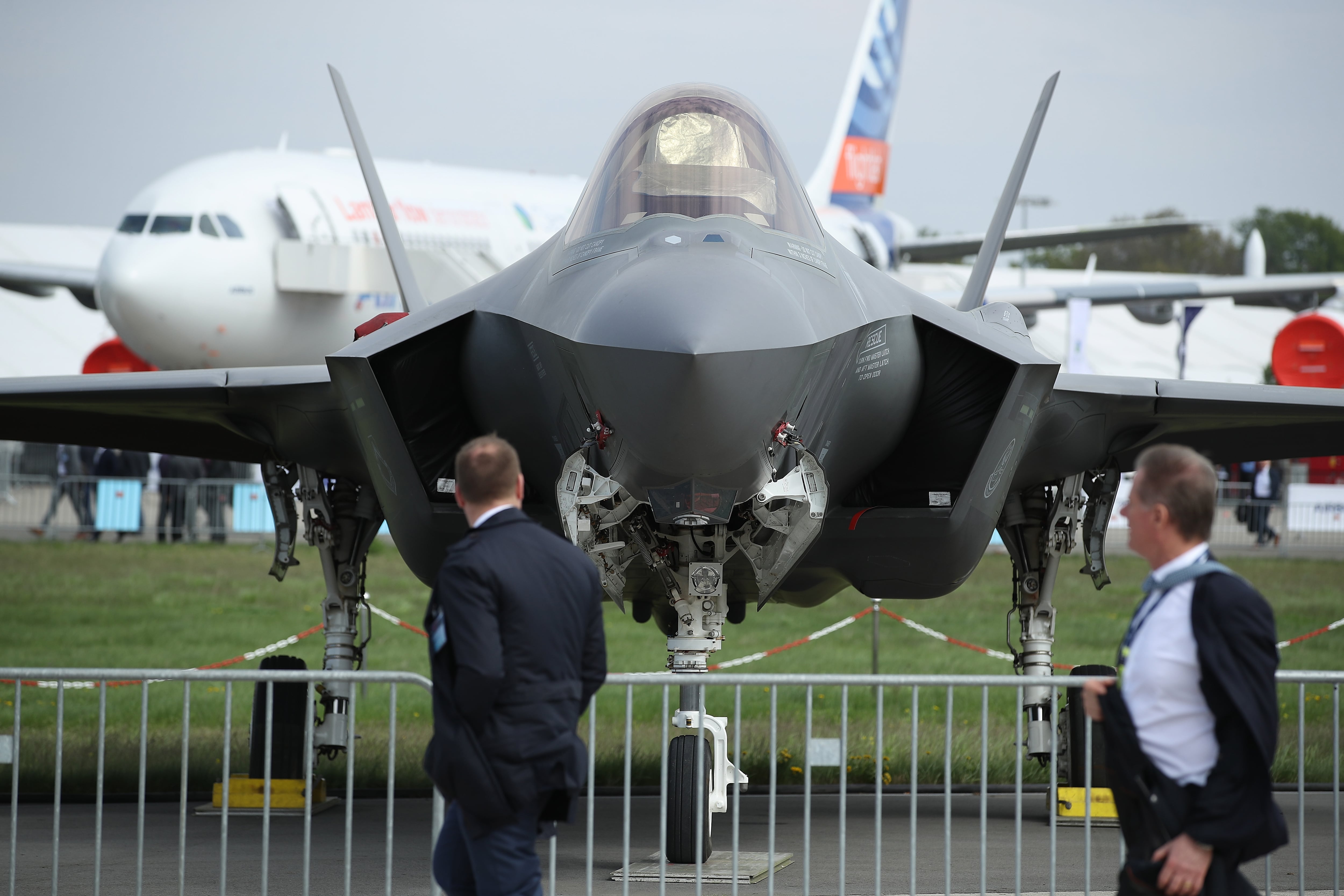BERLIN — The U.S. Air Force is taking its time to settle on a next-generation fighter design, awaiting instead lessons learned from the F-35 jet and playing the field with promising technologies, according to a senior service official.
Options being kicked around are still in the conceptual stage, as America’s newest fighter, the fifth-generation F-35, is only now “coming off the line,” according to Lt. Gen. David Nahom, the Air Force’s deputy chief of staff for plans and programs.
“We’re not in a hurry,” Nahom told Defense News on the sidelines of the International Fighter Conference, an air power-themed confab of industry and government officials held in Berlin, Germany. He noted that expected deliveries of the F-35 and the relatively young age of the F-22 fleet enables the service to be picky about moving forward with the envisioned Next Generation Air Dominance weapon.
In short, the Air Force wants to keep its options open for as long as possible for a weapon whose combat punch will lie not in a single aircraft but rather in the amalgamation of hardware and software, an airborne concerto of data clouds, artificial intelligence, and boundless interconnectivity.
“We don't want to get too stuck into a platform,” Nahom said. “It's a very different way to approach it.”
Still, the service plans to lay the groundwork for boosting the domain of information and data — organizing it, analyzing it, sharing it — as a key element for future aerial warfare. To that end, officials will include a “significant investment in the digital backbone” in the next budget request, Nahom said.
As the Air Force studies its options, service analysts have shied away from the term “sixth-generation” aircraft as a successor to the F-35 because it’s unclear what breakthrough technology will be created next. “What are the characteristics of sixth-generation? I don’t know,” Nahom said.
“Stealth is important,” he added, referring to one of the advertised features of the F-35. “But speed is important, too.”
RELATED

The service aims to develop a new capability quickly once the theoretical legwork is done. That is why there is a renewed emphasis now on engineering processes and algorithm development that Nahom said will have to unfold much faster than under previous aircraft programs.
Air Force acquisition chief Will Roper has put down a marker to develop an aircraft within five years. “Based on what industry thinks they can do and what my team will tell me, we will need to set a cadence of how fast we think we build a new airplane from scratch. Right now, my estimate is five years. I may be wrong,” he told Defense News in an interview in September.
The service’s information-heavy tack on future aerial warfare echoes two European projects aimed at building a next-generation weapon: the British-led Tempest and the Franco-German-Spanish Future Combat Air System. Both programs also lean on the the premise that data clouds, driven by artificial intelligence, can turn flying pieces of metal into breakthrough weaponry.
In the case of the continental program, an envisioned “combat cloud” will be “the ocean between the islands of the platforms,” French Maj. Gen. Jean-Pascal Breton said at the conference.
But Nahom noted a difference in the American way of thinking when it comes to piercing contested airspace — a key skill required of all future warplanes. While the Europeans seem to perceive the task as popping dispersed bubbles of ever-improving air defense systems, the U.S. view is that any airspace may be contested at any given time.
That means a next-generation aircraft will be constantly engaged in the mission of punching its way through enemy defenses, like finding the holes in a never-ending series of Swiss cheese, Nahom said.
Sebastian Sprenger is associate editor for Europe at Defense News, reporting on the state of the defense market in the region, and on U.S.-Europe cooperation and multi-national investments in defense and global security. Previously he served as managing editor for Defense News. He is based in Cologne, Germany.








